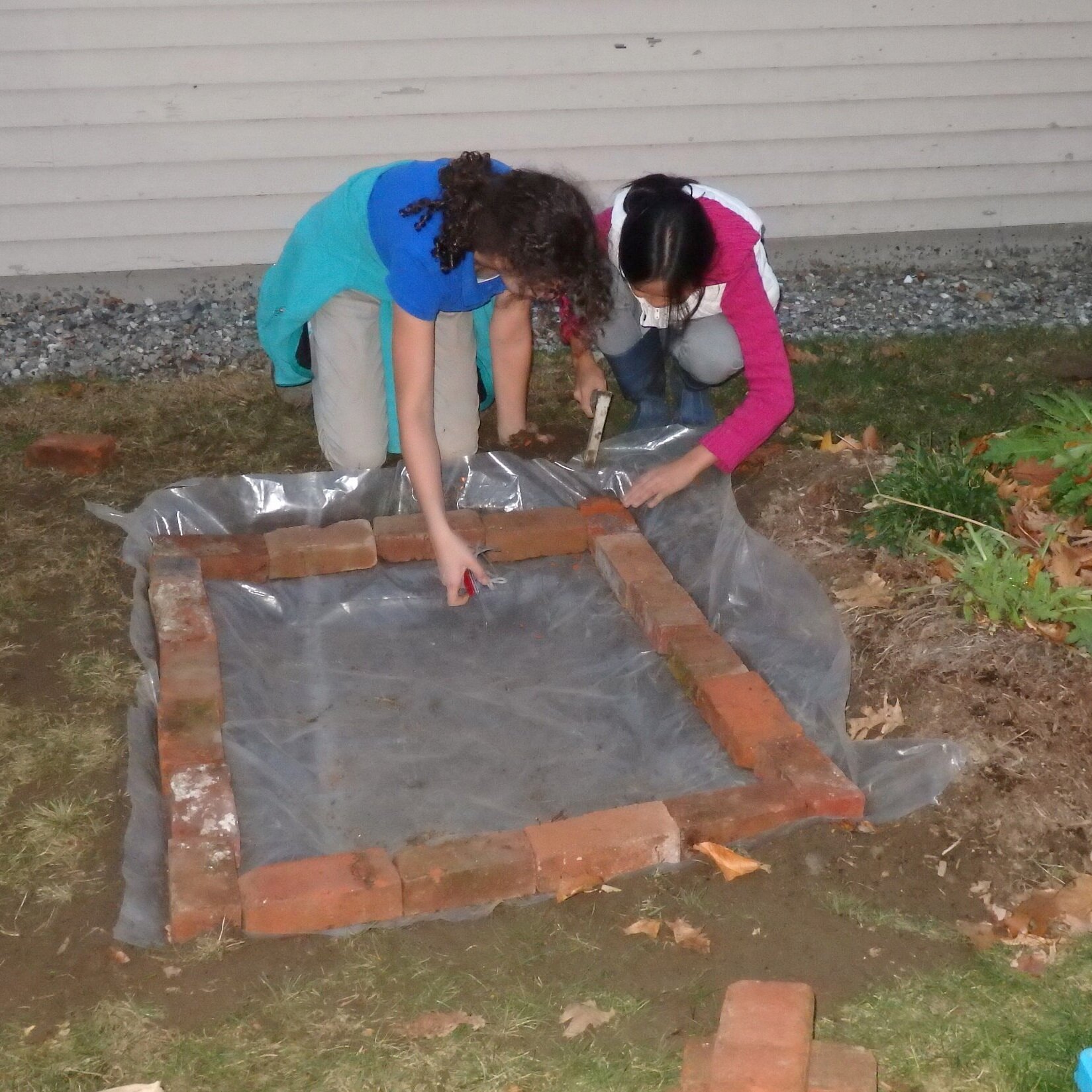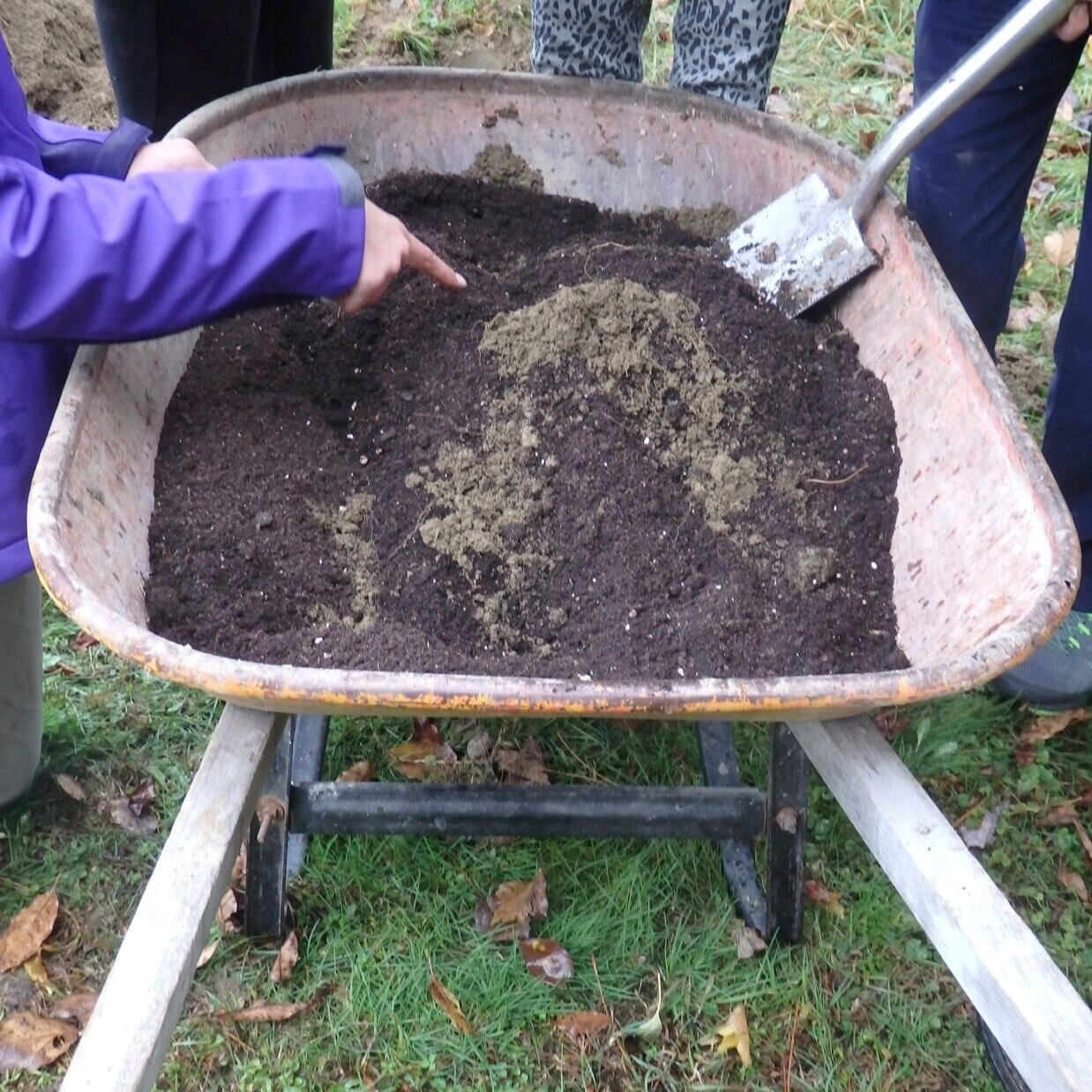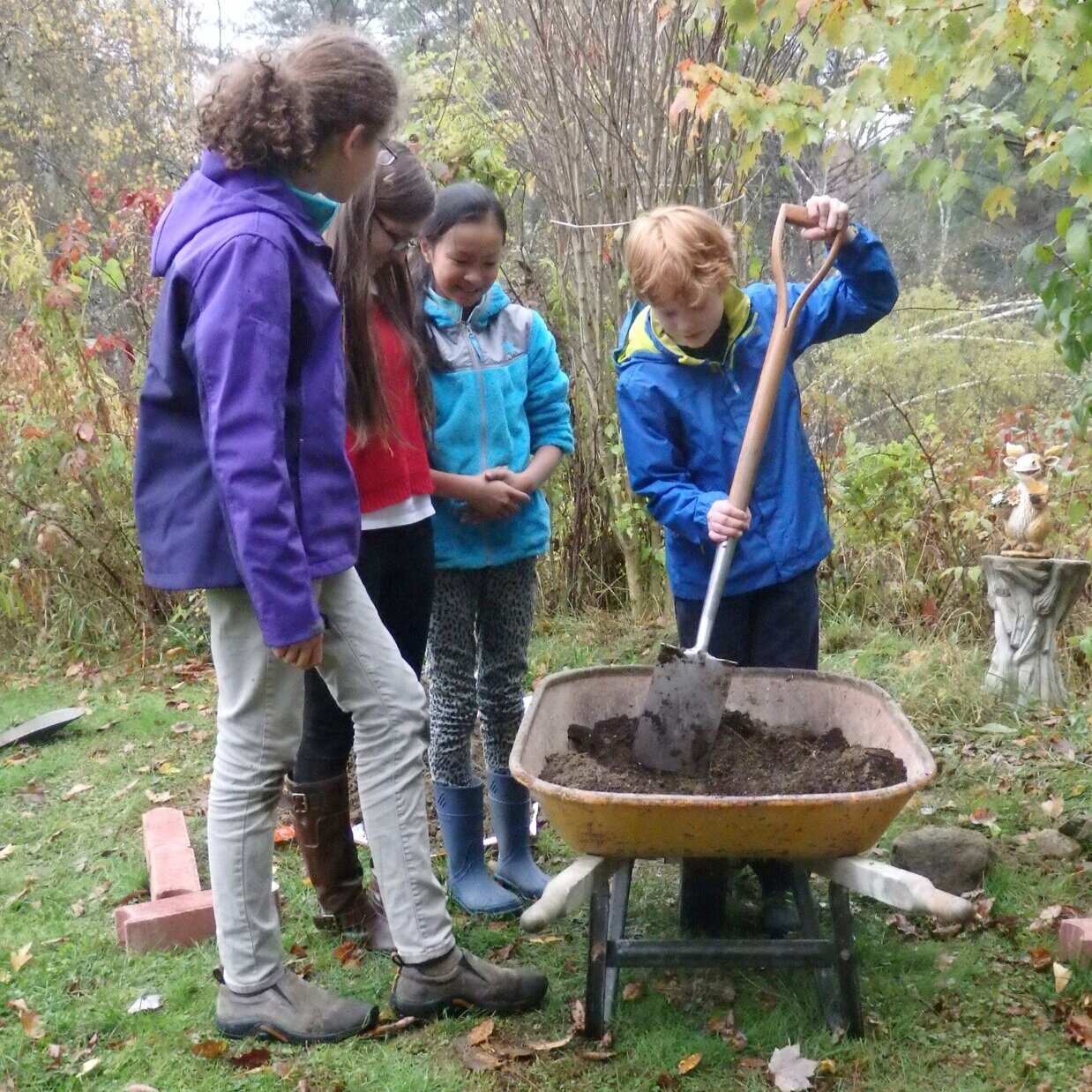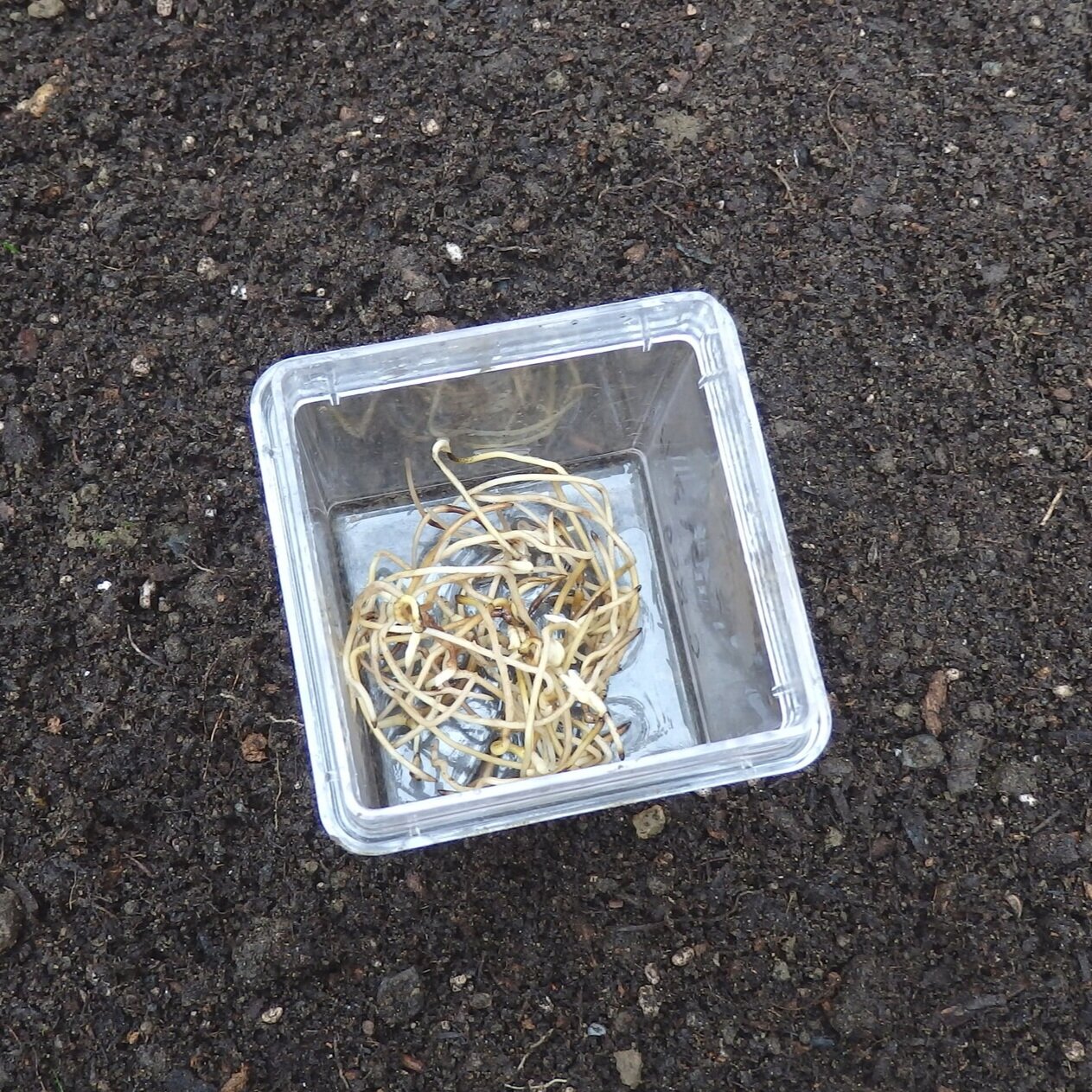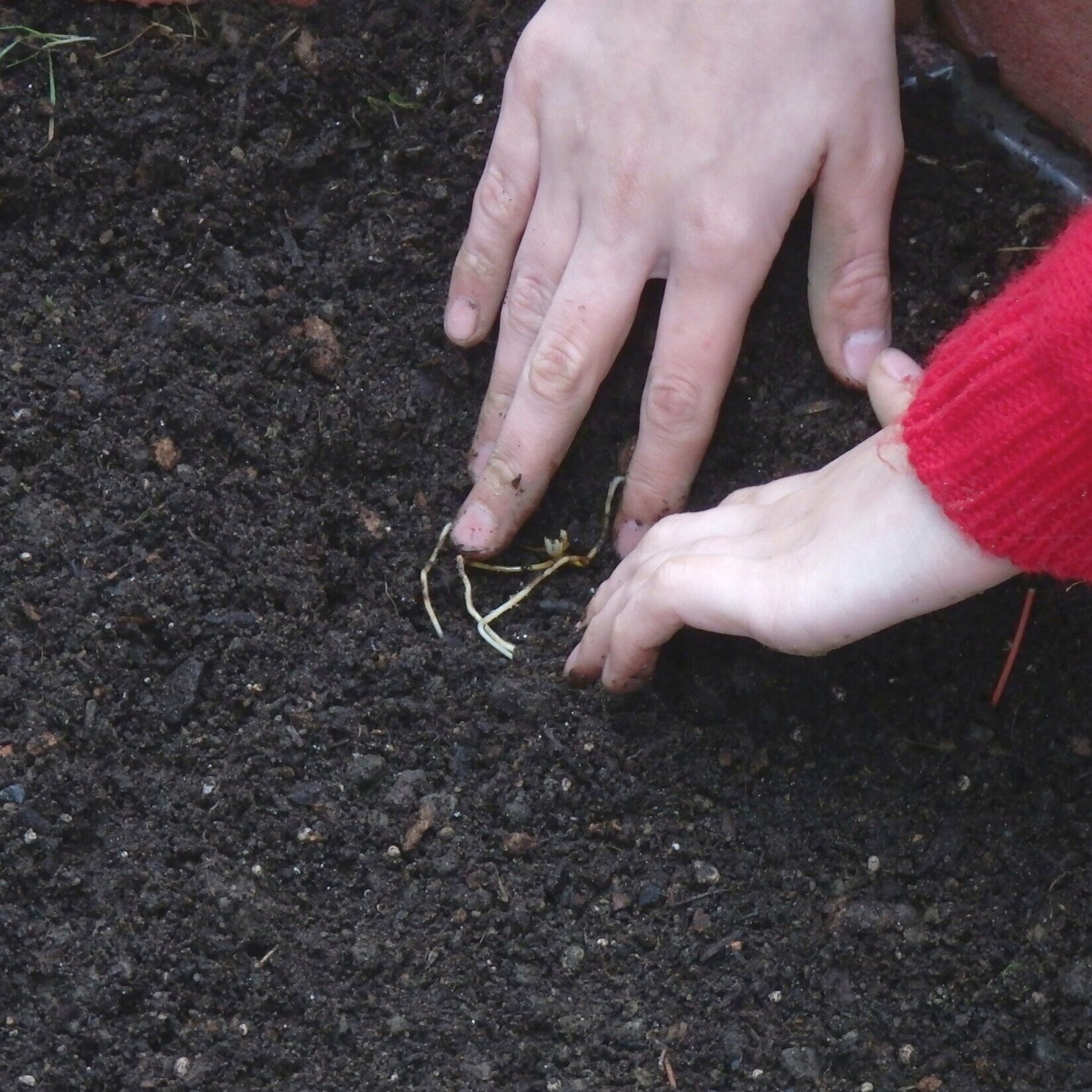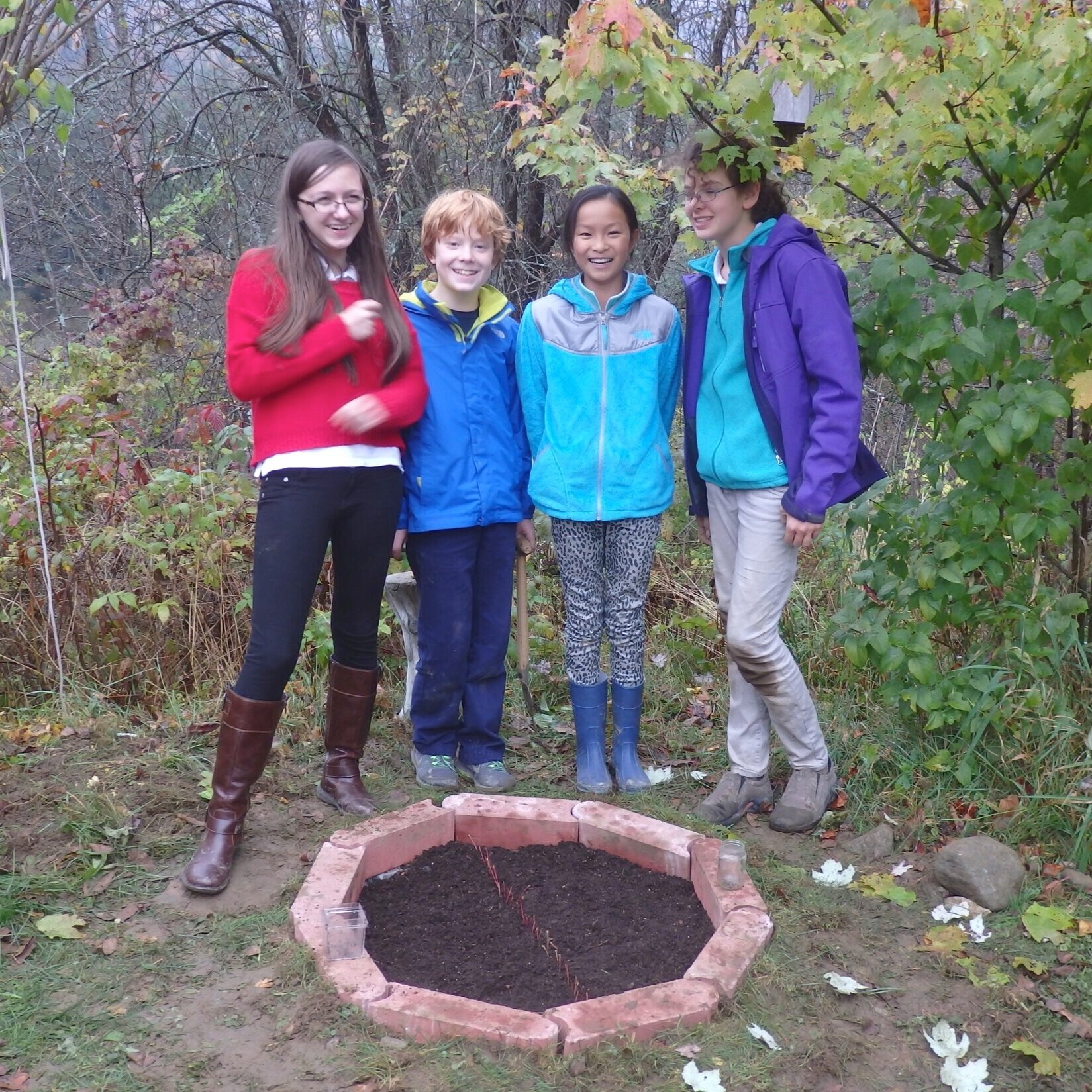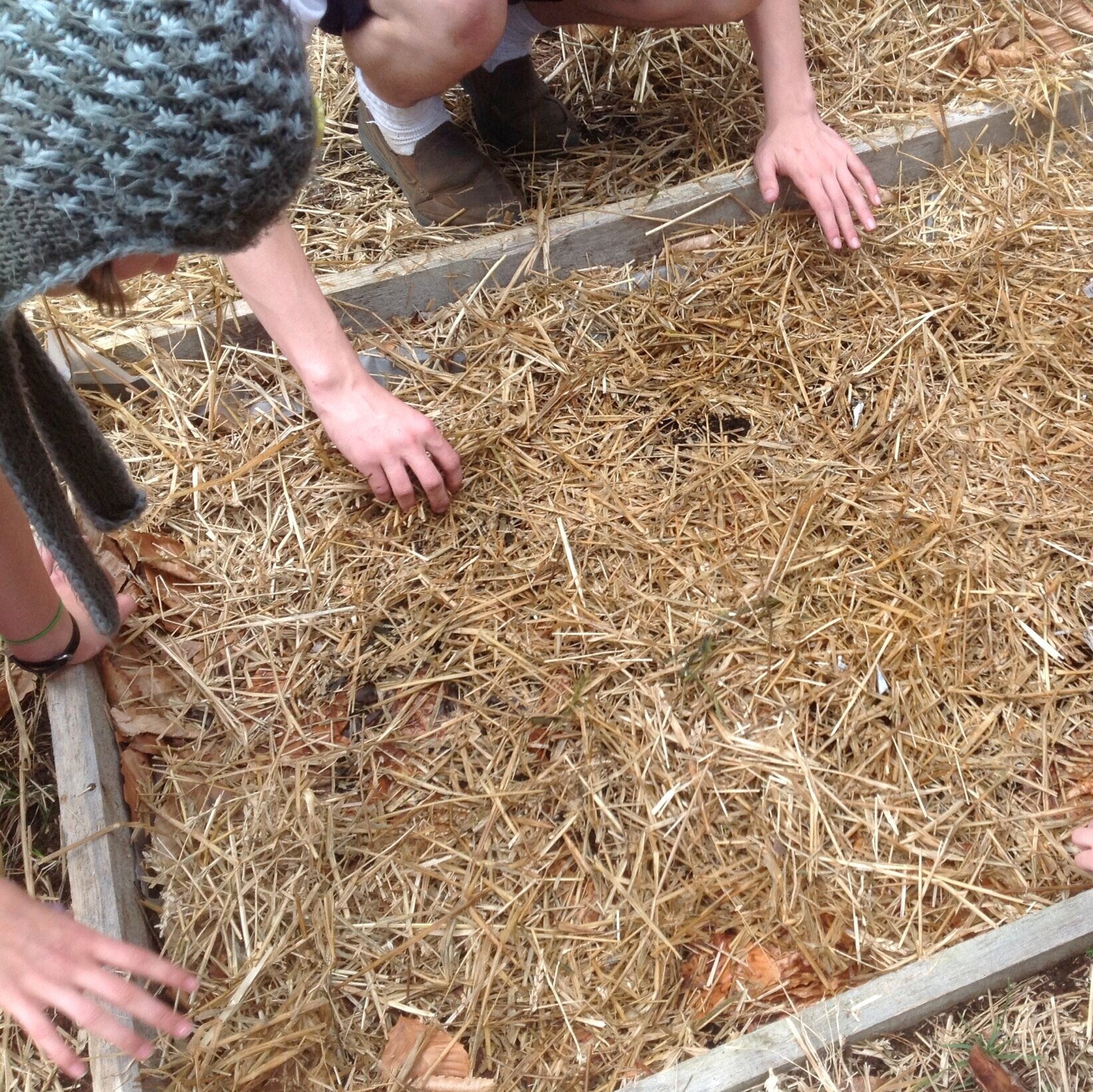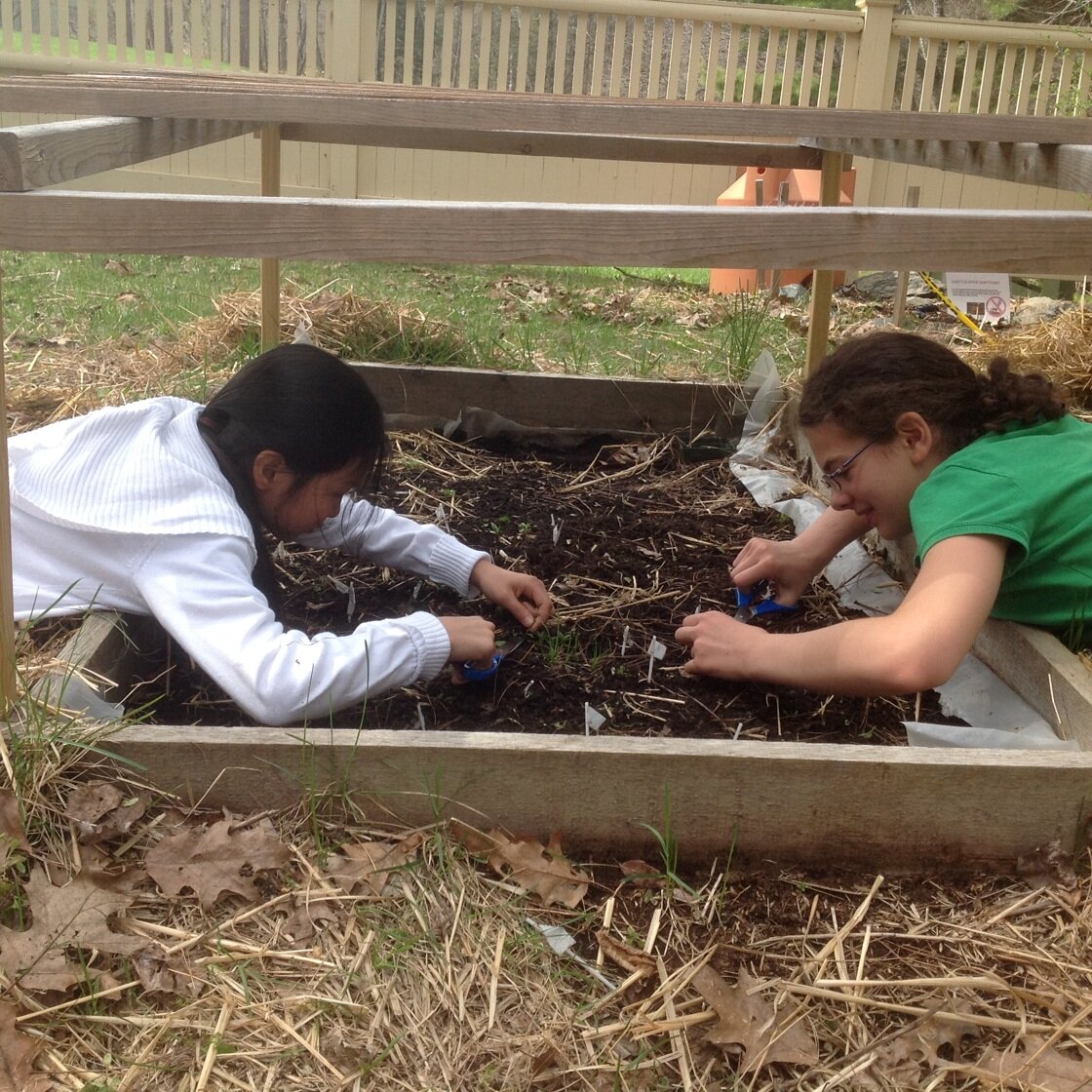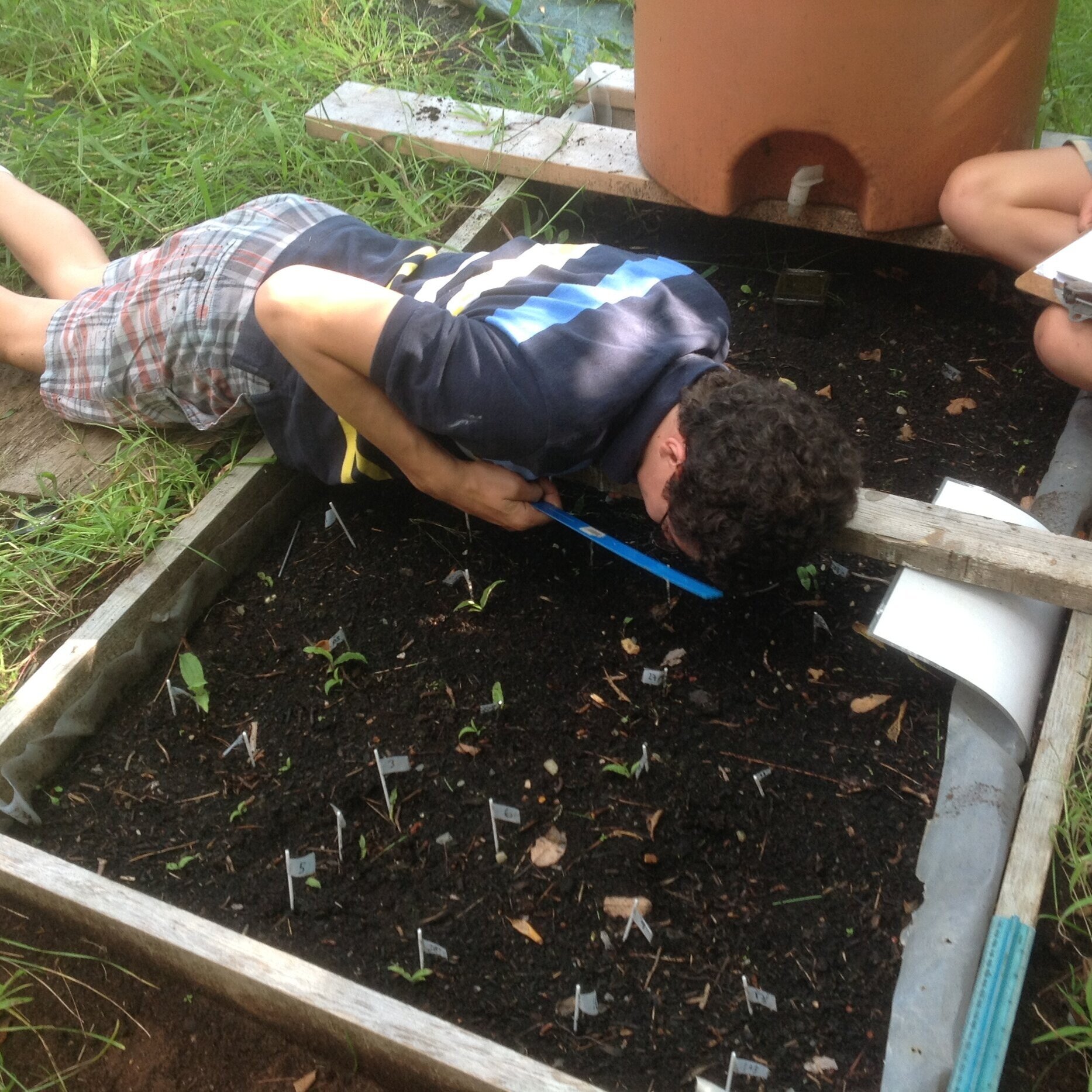A successful fen at Dr. Faletra’s home. It has a healthy flowering population of about a dozen plants. These plants began in sterile seed culture. They took 4 years from germination to flower and are now about 20 years old. When lady’s slippers like a spot, they can live well over a hundred years old.
We have tried planting very small, one-year old seedlings into a natural fen, but none of the seedlings came up. To get a successful transfer to the wild, we believe that we need to allow the seedlings to become stronger and more accustomed to nature before trying to bring them out to the wild. We have designed a method of making a controlled environment, a homemade fen, for planting the seedlings. With a homemade fen, about 50% of the seedlings put up shoots in the following spring.
Instruction:
Locate your fen in a damp area. It should receive about 6 to 8 hours of direct sunlight and have a sweet soil pH of about 7. It is nice to have a ground cover of sphagnum moss and ferns, but not necessary
Dig a hole about 8 to 10 inches deep and save the soil. Put the soil in a box, on a tarp or in a wheel barrow. The dimensions of the hole will vary based on the number of seedlings to be planted
To mimic the conditions of a natural fen, line the hole with plastic and poke a few holes in the plastic so that water can drain out slowly
Mix about half of the original soil and an equal part of composted manure (we use Vermont compost); add a few cups of pelletized lime because most soil in New Hampshire is acidic. Mix well
Fill the hole with the planting soil mixture
Plant seedlings at least an inch apart; each shoot should be almost poking out with all the roots and rhizomes covered.
Before the first frost in late fall, cover the fen with about 3 to 5 inches of straw to prevent the “New England potato effect” where stones (or seedlings) pop out of the ground every year
In the spring, remove the straw and cover the entire fen with about an inch of compost
Monitor the roots all seasons and if they get exposed cover them with additional compost; make sure to water when the weather has been dry and weed regularly


